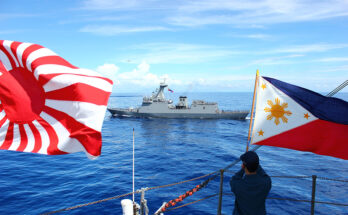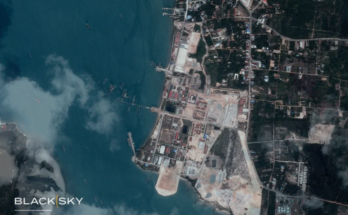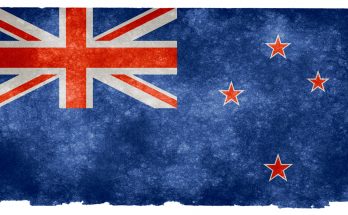by Dan Darling, International Military Markets Analyst, Forecast International.
The Philippines Department of National Defense (DoND) confirmed on June 20 that the second phase of the most recent 15-year, three-phase Armed Forces of the Philippines (AFP) Modernization Act has received approval from President Rodrigo Duterte.
The first phase, Horizon 1, ran from 2013 to 2017, during which the AFP took delivery of ex-U.S. Coast Guard Hamilton-class cutters (renamed Gregorio del Pilar class in Philippine Navy service), two naval attack helicopters (Leonardo Helicopters AW159 Lynx Wildcats), six multirole assault craft, two strategic sealift vessels, and, for the Philippine Air Force (PAF), eight combat utility helicopters (the Leonardo AW109E Power). This phase also involved the refurbishment of two C-130H Hercules tactical airlifters and the acquisition of 12 FA-50 Lead-In Fighter Trainer (LIFT) aircraft from South Korea which allowed the Air Force to reconstitute a combat air arm, which had been abandoned in October 2005 when its last eight F-5 fighters were retired from service.
Now comes the second five-year phase, Horizon 2, and with it an estimated PHP300 billion ($5.6 billion) in acquisition funding.
Under this phase, which runs from 2018 through 2022, some $890 million will be allocated to the Army, $1.44 billion to the Navy, and $2.61 billion to the Air Force, with the remainder earmarked for General Headquarters and the government arsenal. This marks a sharp uptick in funding for military modernization when contrasted with Horizon 1, which provided around PHP85 billion ($1.6-$1.8 billion in 2013-2017 dollars).
With more than four times the funding than allocated during the previous five-year cycle, the AFP seeks a wide range of new materiel.
For the Air Force this includes expensive platforms such as multirole jet fighters, maritime patrol aircraft, tactical airlifters, heavy-lift helicopters, and unmanned aerial vehicles (UAVs).
The Army has set its sights on additional artillery and firepower in the form of both towed and self-propelled howitzers and multiple launch rocket systems (MLRS), and on increasing its maneuverability, logistical support structure, and infantry capabilities by adding armored recovery vehicles, fire support vehicles, ground mobility equipment, tactical radios, night-fighting equipment, and individual weaponry.
The Navy continues its quest for expanded surface ship capacity, seeking to add two corvettes and multirole offshore patrol vessels (OPVs), plus amphibious assault vehicles and anti-submarine warfare (ASW) helicopters.
Most interesting is the inclusion of a submarine acquisition initiative, which forms part of the Navy’s “Strategic Sail Plan” under which the service would add three diesel-electric submarines to meet its desired fleet force mix. This ambition was to be met under the third phase of the modernization plan (Horizon 3), but according to DoND spokesperson Arsenio Andolong, it will instead be brought forward under Horizon 2.
The Philippine Navy has created a special Submarine Group to prepare for delivery of new submarines and their operational use. A Navy plan to study submarine requirements was previously given the go‑ahead by the Aquino government in 2015, but approval for their procurement remained uncertain with the swearing in of Rodrigo Duterte as new president on June 30, 2016.
Duterte arrived in office intent on shifting the country’s security away from an external focus to a more internal one. In a divergence from his predecessor, Benigno Aquino, Duterte viewed urban crime, insurgency and terrorism as greater threats to the Philippines than China, with which the archipelagic nation shares competing territorial claims on the Spratly Islands and the Scarborough Shoal. Duterte viewed China as less of an existential threat than Aquino did and appeared disinclined to flex muscle in the South China Sea in order to underwrite the Philippines’ claims.
Thus with Duterte coming to power and his emphasis on rapprochement with China (despite the latter’s aggressively broad claims across the South China Sea and island-building campaign in the region), it appeared that much of the Philippine Navy’s Strategic Sail Plan would be subject to reconsideration and altered focus.
Now, however, the Philippines’ president appears inclined to heed at least some of the wishes of the AFP and provide greater funding streams to support them. This might, in part, be due to the five-month siege campaign undertaken in mid-2017 to retake the city of Marawi from Muslim separatists. It also may be a bid by the tough-talking president to keep the military and security services on his side as his aggressive counternarcotics campaign – in which 4,000 Filipinos have been killed in police operations and another 120,000 arrested – continues.
Regardless, the ambitions laid out on paper under the AFP Modernization Act continue to outstrip the financial resources applied, despite continued budgetary upticks that have resulted in a nominal 9 percent rise in the 2018 earmark over the 2017 figure. At roughly $2.93 billion for fiscal year 2018, the topline defense budget remains slim in contrast to the price tag of the armed forces’ wish list. An additional $1.1 billion in capitalization funding per annum should help bridge the funding gap, but nonetheless some equipment requirements are likely to be filled through donated secondhand articles from allied partners.
Author Daniel Darling covers Europe and Asia, Australia & Pacific Rim for Forecast International’s International Military Markets series, where he bringings a wealth of expertise on the political and economic forces shaping these markets. The IMM series examines the military capabilities, equipment requirements, and force structures inventories of 140 countries, with corresponding coverage of the political and economic trends shaping the defense outlook for these individual countries and regions.
For 50 years, Forecast International intelligence reports have been the aerospace and defense industry standard for accurate research, analysis, and projections. Our experienced analysts compile, evaluate, and present accurate data for decision makers. FI's market research reports offer concise analysis of individual programs and identify market opportunities. Each report includes a program overview, detailed statistics, recent developments and a competitive analysis, culminating in production forecasts spanning 10 or 15 years. Let our market intelligence reports be a key part of reducing uncertainties and mastering your specific market and its growth potential. Find out more at www.forecastinternational.com




